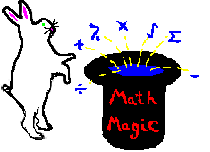

A. Definitions
isosceles triangle - A triangle that has at least two sides that are equivalent.
equilateral/equiangular triangle - A triangle that has all three sides equal and all 3 interior angles are 60 degrees.
acute - An acute angle is an angle that is less than 90 degrees. An acute triangle is a triangle where all the angles are less than 90 degrees.
obtuse - An obtuse angle is an angle that is more than 90 degrees. An obtuse triangle is a triangle where one angle is more than 90 degrees.
right - A right angle is an angle that is exactly 90 degrees. A right triangle is a triangle where one angle is 90 degrees.
complement - The compliment of an angle is 90 minus the angle. In other words, the two angles must equal a right angle.
supplement - The supplement of an angle is 180 minus the angle. In other words, the two angles must add to be 180 degrees.
B. Basic Memorizations
General Triangles:
Area = 1/2bh, where 'b' is the base and 'h' is the height
Perimeter = a+b+c, where 'a', ' b', and 'c' are the sides
Right Triangles:
Area = 1/2ab, where 'a' and 'b' are the legs of the triangle
c = ![]() ,
where 'c' is the hypotenuse
,
where 'c' is the hypotenuse
Equilateral Triangles:
Area =
![]() ,
where 'h' is the height
,
where 'h' is the height
Area =
![]() ,
where 's' is the side
,
where 's' is the side
C. Examples
Ex [1] Find the area of an equilateral triangle with sides of 8cm. __________cm2.
a. In this example you
should use the formula ![]()
b. 82 =
64. 64 ![]() 4 = 16.
4 = 16.
c. The answer is ![]() .
.
Ex [2] The complement
of ![]() is ______ degrees.
is ______ degrees.
a. The complement of an angle is the angle that when added to it is 90 degrees.
b. Therefore, the answer is 90 - 76 = 14.
c. The answer is 14.